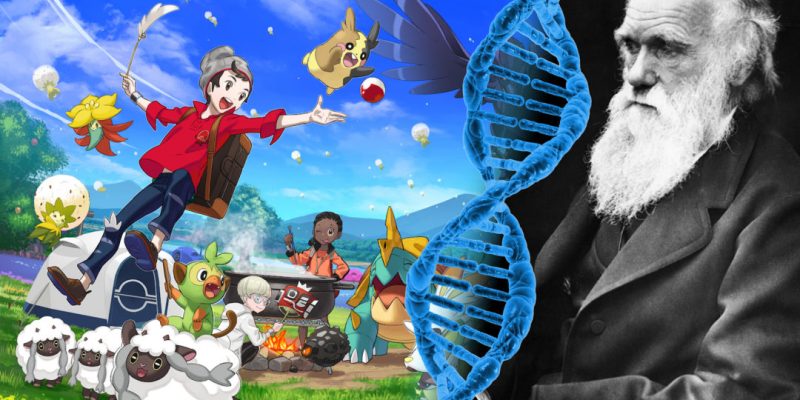Every generation of the Pokémon games can be defined by its starters. These are the three Pokémon that the player gets to choose from at the beginning of the game. They are always of the Fire, Water, and Grass types and are usually strong enough to remain by the player’s side throughout the game. The original starters Bulbasaur, Charmander, and Squirtle remain some of the most iconic Pokémon after over 20 years.
Leading up to the release of Pokémon Sword and Shield, the fandom was divided (all in good fun this time) among players who planned to start with the gregarious Grass-type Grookey, the weepy Water-type Sobble, and the flamboyant Fire-type Scorbunny. But regardless of which starter everyone chose, the next big question on everyone’s minds was: What will their evolutions look like? Because starter Pokémon always “evolve” twice throughout the game — from a small, cute pocket monster to a big, scary final “evolution.” Evolved Pokémon are stronger than their lesser forms, able to learn the most powerful moves and hold their ground against the other legendary monsters that populate their world.
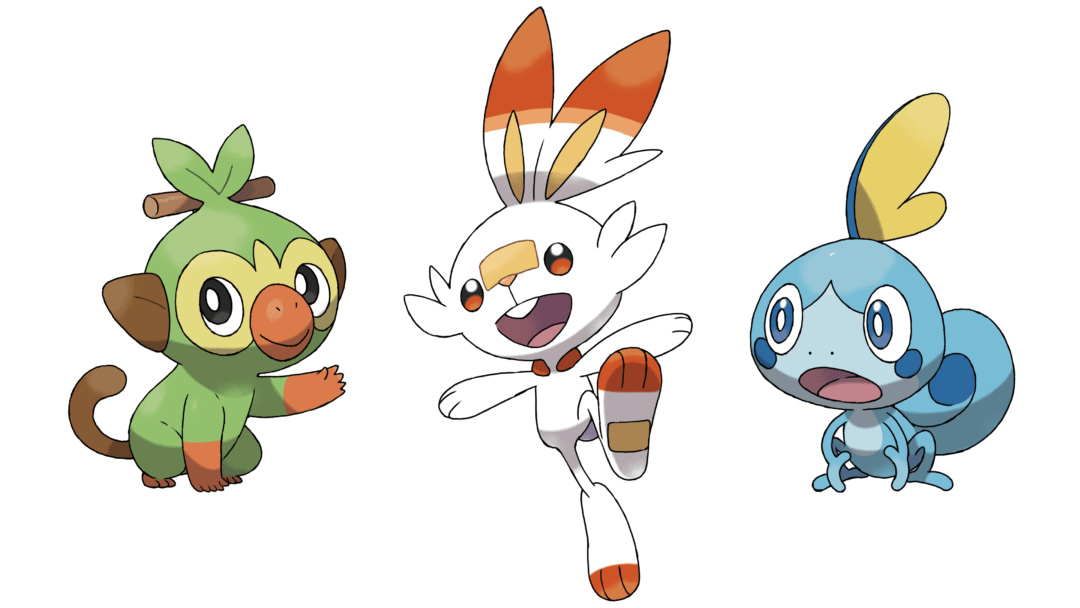
In the real world, just like in Pokémon, “evolution” refers to the process whereby one species transforms into another species. However, in nature “evolution” occurs via a process that Charles Darwin called “natural selection.” In short, new species arise as the result of small inherited genetic variations that convey survival advantages. These variations build up over time until a new species has differentiated from its predecessor. The variations are the result of genetic mutations, which can be caused by a variety of mechanisms such as errors in DNA replication and exposure to mutagenic substances. Suffice to say, the natural process of evolution takes many generations of being exposed to specific natural selection pressures.
In Pokémon, however, the term “evolution” is used in the broadest sense — not to describe the specific process of evolution by natural selection, but rather as a catch-all term for the transformation of one Pokémon species into another. The choice to use the word “evolution” goes back to the original Japanese versions of the game, which used the Japanese word shinka — literally “evolution.” Yet while Pokémon’s “evolution” does not map one-to-one to the scientific concept of evolution, it does map strongly to another biological concept: the life cycle.
In biology, “life cycle” refers to the series of major biological changes an organism goes through during its lifetime. The butterfly provides an elegant example: It starts life as an egg that then hatches to become a caterpillar. That caterpillar eats and grows until it can grow a chrysalis around itself. Within the chrysalis, it goes through metamorphosis and transforms into a beautiful butterfly. That butterfly grows, mates, and lays eggs, and the cycle begins again. That’s a life cycle.
There are multiple Bug-type Pokémon that go through this exact life cycle. Caterpie, the caterpillar Pokémon, “evolves” into a glorified chrysalis called Metapod and then soon after “evolves” again into the butterfly Pokémon Butterfree. Caterpie’s “evolution” maps one-to-one to the life cycle of real-world butterflies.
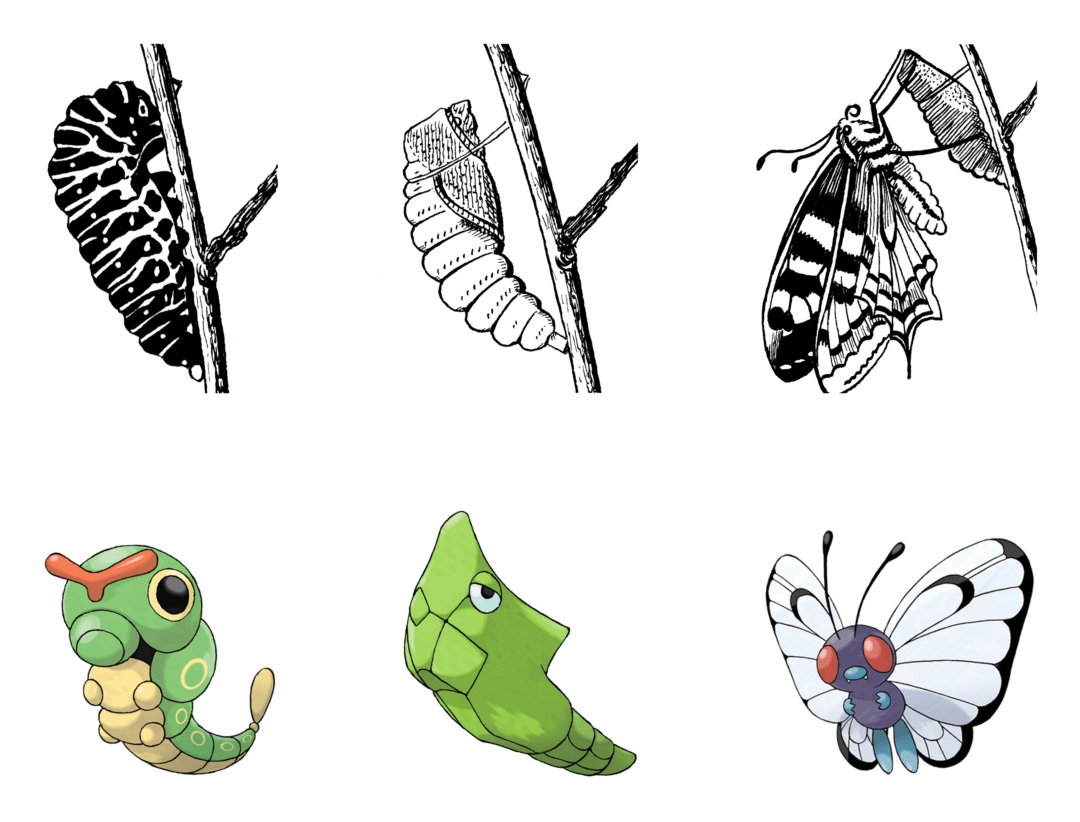
All of this makes a lot of sense once you learn a bit about Pokémon’s creator, Satoshi Tajiri of Game Freak. In a 1999 interview, Tajiri revealed that he had a deep interest in bug collecting as a child. Tajiri lamented seeing urbanization of his hometown reduce the number and variety of bugs for children to collect, and this directly inspired Pokémon’s game design.
Tajiri was not asked about the choice to use the word shinka (“evolution”) specifically, but it seems evident that the word is used in the broadest possible sense. Rather than mapping to the scientific concept of evolution by natural selection, “evolution” in Pokémon describes the transformation from one species into another species by any mechanism. Even the term “species” is used in a not-quite-biological way — it is applied to the different stages of the life cycle of a single Pokémon. In biology, we consider organisms at different stages of their life cycle to be the same species, but in Pokémon they’re called different species.
We can even note Pokémon’s representation of evolution-as-life-cycle in the context of the game systems. Pokémon is a Japanese role-playing game (JRPG) and uses a system whereby experience points (XP) are earned by battling Pokémon against each other. Once enough XP is accrued, the Pokémon gains a level, which makes it stronger. Many Pokémon “evolve” once they hit a certain level in the game. It’s almost like the levels actually represent age. If imagined in this hypothetical light, once a Pokémon hits a certain “age,” it “evolves” and advances along its life cycle.
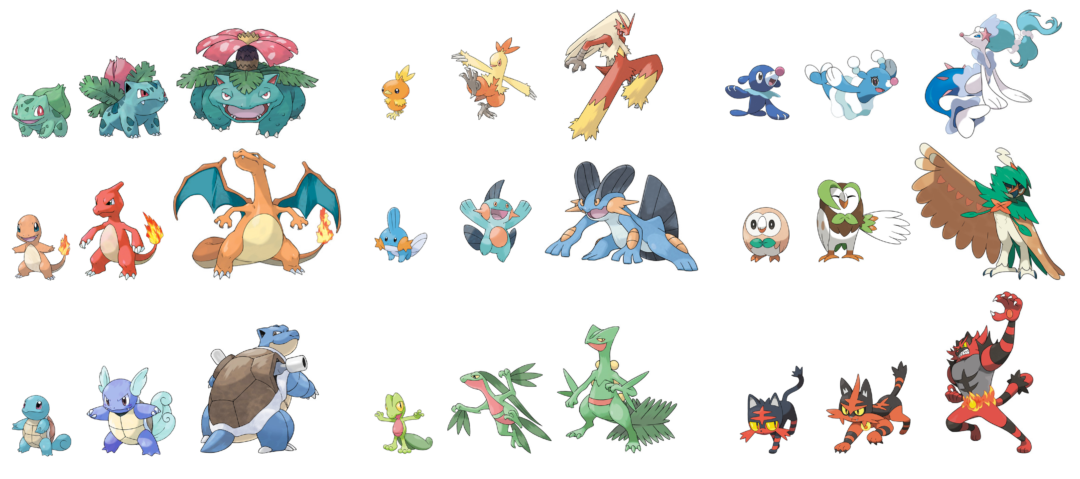
While a lot of the Bug-type Pokémon “evolve” in a way reminiscent of a butterfly, starter Pokémon “evolution” looks a lot like the life cycle that mammals go through. Think about the human life cycle — humans start out as babies (the first stage), then go through a period of rapid growth (adolescence, the second stage), and finally become adults (the third stage). The “evolution” of the starter Pokémon in each generation follows this same path. In fact, the visual design of the starter Pokémon is often directly inspired by the toddler-adolescent-adult transformation many animals undergo during their natural life cycle in the real world.
While a lot of Pokémon evolve upon hitting a certain level of experience, there are others who only evolve after being exposed to certain items. Take Pikachu, for example. Pikachu is without a doubt the most famous of all Pokémon, but many outsiders may not realize that Pikachu can “evolve” into a bigger, stronger Pokémon named Raichu. In order to “evolve” into Raichu, Pikachu needs to be exposed to an item called a Thunder Stone. No matter how much experience and how many levels Pikachu has earned, the Thunder Stone is the key to reaching the next stage of its life cycle. There are many other Pokémon that require an elemental stone to “evolve” as well, but they all basically follow the same life cycle as Pikachu.
It might be hard to imagine there’s a real-world equivalent to this kind of life cycle in nature, but it does indeed exist. To find it, we must look to Tajiri’s beloved world of insects once again. The closest real-world life cycle that matches the “evolution” of Pikachu and the other elemental stone Pokémon is… the honey bee! Yes, the very same honey bee species that is responsible for making that sweet treat we all love.
Honey bees have three different forms they can take. There are worker bees, who are all infertile females and are responsible for, well, doing all the work such as gathering pollen, taking care of the hive, and so forth. Then there are the drones, all of whom are male, who mainly exist for the purpose of mating. And finally, there are the queen bees. Queen bees are all female just like worker bees, but they are larger and they are fertile. Their job is, essentially, to mate with the drones and lay tons of eggs.
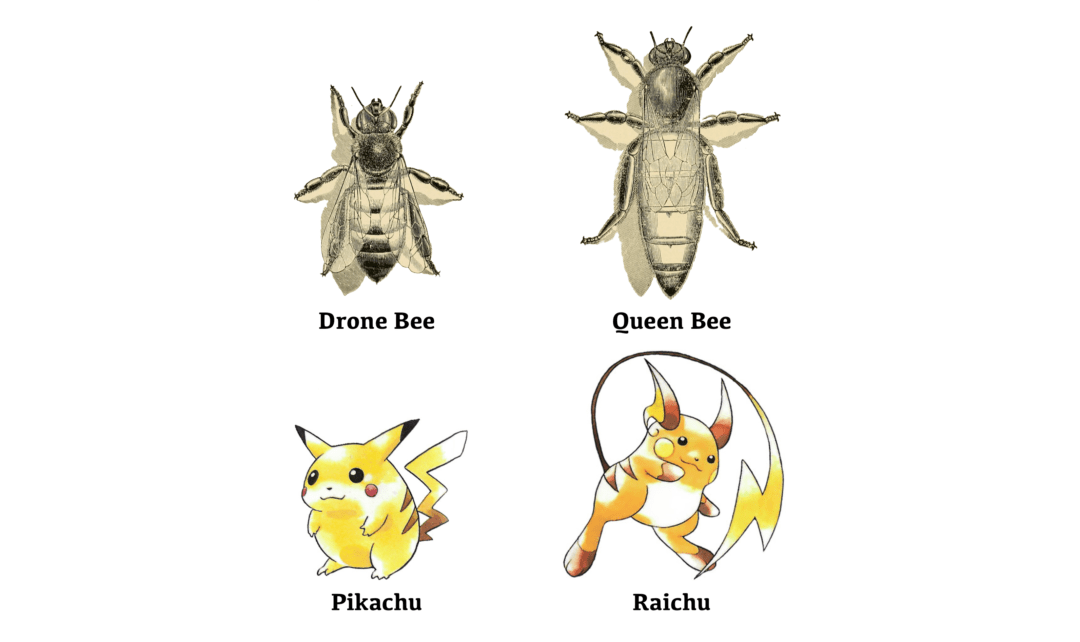
Any fertilized honey bee egg has the potential to become a queen bee. In fact, a worker bee and a queen bee could be genetic clones, but they are very different anatomically, physiologically, and behaviorally. These differences arise because the queen bee is fed large amounts of a special food the worker bees produce called royal jelly. While all honey bee larvae eat small quantities of royal jelly, the queen bee larvae are literally swimming in it. There is evidence that the royal jelly has an effect on the epigenetic state — that is, the activation and deactivation state of various genes — of the queen bee larvae’s genome. These changes prioritize metabolism and maintain fertility while deprioritizing features queen bees don’t need, like pollen-collecting baskets. The end result is a completely different type of bee from the workers, all because the larvae were exposed to a large amount of royal jelly.
So perhaps, in the Pokémon world, a Thunder Stone behaves like royal jelly for a Pikachu — activating and deactivating genes and leading to a transformation into another, more advanced form. And that may also explain why the elemental stones cause multiple different Pokémon to “evolve” into their final forms. Perhaps the epigenetic effect works on more than one species.
In a recent interview, Pokémon Sword and Shield director Shigeru Ohmori and producer Junichi Masuda admitted that they weren’t sure how “evolution” works biologically in the Pokémon world. Masuda even said that the science of how Pokémon work isn’t really set in stone. But even if the scientific details of how it works in the Pokémon world aren’t clear, it’s certainly true that a lot about Pokémon “evolution” is inspired by real-world biological life cycles.
